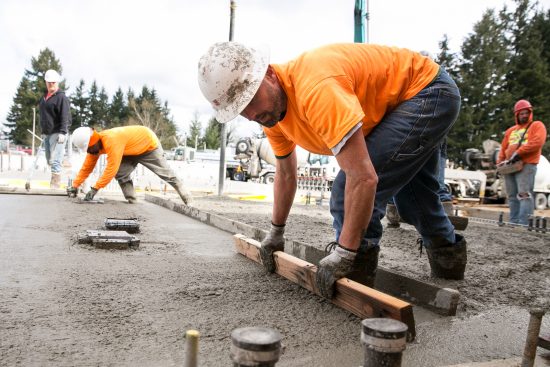The Legislature passed a supplemental capital budget that makes strong investments in housing, shelter, environmental cleanup and school construction.
The budget first passed yesterday in the state House of Representatives on a unanimous vote, then passed the state Senate today on a unanimous vote.
“Our capital budget continues our strong investments in housing, homelessness and behavioral health,” said Senate capital budget lead Sen. David Frockt (D-Seattle). “Schools around the state will receive significant funding, as will many of our colleges and universities. Supplemental budges are always much smaller than in main budget years, but the funds we’re investing will go a long way in improving the lives of Washingtonians.”
“This is about tackling emerging needs, including the housing and homelessness crisis, behavioral health and child care,” said House capital budget lead Rep. Steve Tharinger (D-Port Townsend). “It’s a bipartisan budget that will create jobs and build a better future for people in every corner of the state of Washington.”
The budget invests $13.8 million to help alleviate homelessness, with $7.8 million dedicated to improving shelter capacity around the state. A new competitive grant program for the development of community housing to assist people experiencing homelessness receives $5 million, and the remaining $1 million goes to a pilot project to preserve manufactured and mobile homes.
These investments in housing and alleviating homelessness complement a $160 million investment included in the supplemental operating budget. The investments also build upon last year’s biennial capital budget, which invested record sums in housing and behavioral health treatment facilities.
The budget invests $33.7 million in toxics cleanup, using funds generated by a measure passed during the 2019 legislative session. This bill sponsored by Frockt changed the way petroleum companies are taxed under the Model Toxics Control Act (MTCA). An additional $5 million in MTCA revenue is provided in the budget to assist local government with stormwater projects.
School construction projects receive $25.9 million statewide, and an additional $13.2 million is included for seismic safety improvements in K-12 schools.
The following distressed school grants are also included in the supplemental capital budget
- $700,000 at John Muir Elementary School in Seattle Public Schools for a two-classroom preschool addition
- $300,000 at Lowell Elementary School in Seattle Public Schools for conversion of two classrooms to a new health clinic
- $328,000 for an agricultural resource center in Tacoma Public Schools
- $200,000 for Tacoma Schoolyard Park in Tacoma Public Schools
- $309,000 for a school-based health center at a Port Orchard school in South Kitsap School District
- $100,000 for predesign and scoping work for a high school replacement project in Republic
- $1 million for a project in the Mount Adams School District
A list of school modernization grants can be found here.
In early learning, the capital budget invests $4.2 million in matching grants and loans to purchase, construct, or modernize facilities. An additional $3 million is provided for specific projects.
Higher education investments include:
- $20 million for the first phase of the Spokane Falls Community College fine and applied arts facility.
- $4 million for design of the life sciences building at the Washington State University Vancouver campus.
- $1 million for predesign of the Magnuson Health Sciences replacement facility at the University of Washington.
###

